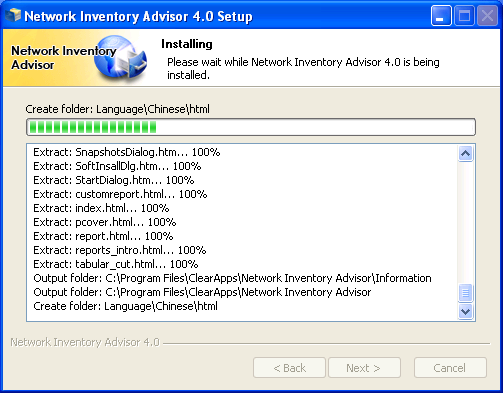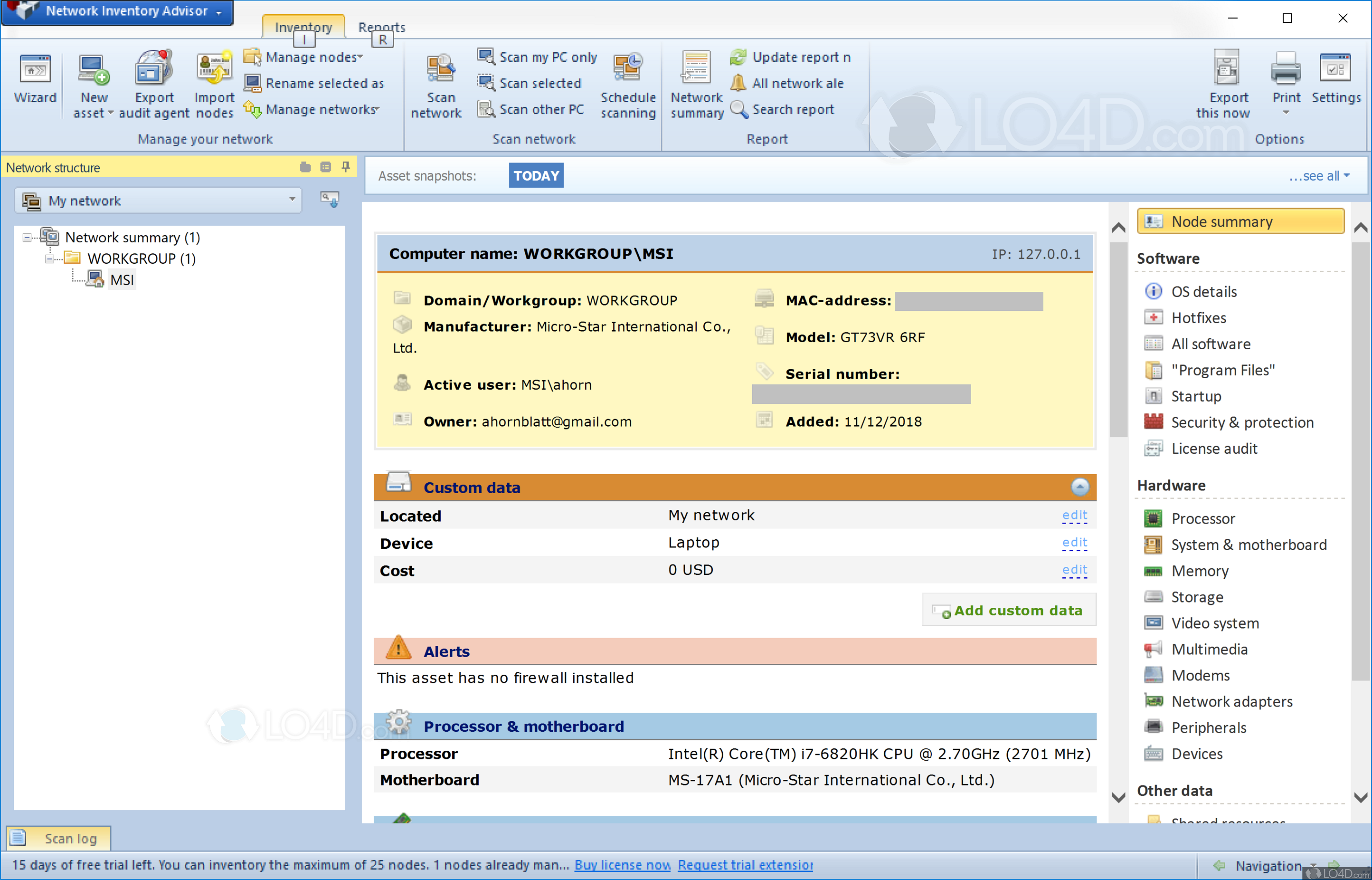

- #NETWORK INVENTORY ADVISOR SNMP NOT SUPPORTED SOFTWARE#
- #NETWORK INVENTORY ADVISOR SNMP NOT SUPPORTED DOWNLOAD#
- #NETWORK INVENTORY ADVISOR SNMP NOT SUPPORTED FREE#
- #NETWORK INVENTORY ADVISOR SNMP NOT SUPPORTED WINDOWS#
There are also lists of select Locations and Groups which you can use to classify your nodes. You can set a custom name for any node, and enter the IP address, SNMP type and SNMP community. The localhost node will have been added by default. The default credentials are: Username: nmis Password: nm1888 From there go to the URL (using from above).Ĭlick Add Nodes on the left side menu and you will be prompted to log in.
#NETWORK INVENTORY ADVISOR SNMP NOT SUPPORTED DOWNLOAD#
If you haven’t already, hit the download button above and download the the Virtual Machine. The default hostname for the virtual machine is omk-vm9-centos7. The authentication credentials are as follows:Įnter these details as prompted to initialize the Virtual Machine. The login screen should have loaded in the Virtual Machine. Log in to the FirstWave Virtual MachineĬongratulations! You should now be running the FirstWaveVirtual Machine. By default this key is set to Left Command ⌘ on Mac, > on Windows, and > on Linux.ĥ.

Please note that when you click within the Virtual Machine, your cursor will disappear and you will not be able to interact with your OS until you press the Host key on your keyboard. If the text is too small to read, go to Virtual Box’s View settings and select Scaled Mode, which will allow you to resize the window to your preference. In VirtualBox, this can be done by clicking the green start arrow. Now that you’re all set up, you’re ready to run the Virtual Machine.

Then, select Storage settings, and ensure that “Use Host I/O Cache” is selected, as below:įinally, select Network settings, and ensure that Adapter 1 is attached to “Bridged Adaptor”, as below: Second, select Display settings, and ensure you have allocated at least 16MB of Video Memory, and that the Graphics Controller is set to “VMSVGA”, as below: You need to ensure that the hardware clock is in UTC time, as below: The first setting we’ll change can be found under the System tab. You will need to change four separate settings to allow the FirstWave Virtual Machine to run correctly. Then, click on the yellow “Settings” cog. Select the FirstWave Virtual Machine once it’s loaded into the left sidebar of the application. In VirtualBox, go to File>Import Appliance, and then select the FirstWave Virtual Machine.
#NETWORK INVENTORY ADVISOR SNMP NOT SUPPORTED WINDOWS#
For Windows and Linux equivalent screenshots, please visit the FirstWave Wiki here. This guide shows screenshots of the macOS version of VirtualBox (6.1). In VMWare’s Desktop applications, this is done by pressing the triangular “Play” button. The Virtual Machine should import with all settings automatically.Įnsure that you have granted Accessibility permissions in System Preferences for VMware to allow the Virtual Machine to run properly. Go to File –> Open and select the FirstWave Virtual Machine. If you have the VM already deployed you can jump to Section 5. To use OVF/OVA files with other virtualisation systems like KVM you may have to convert the OVF file to a native format Two well-known tools for this purpose are virt-v2v (available in CentOS6/RHEL) and virt-convert (in Debian). If you are deploying on another hypervisor, please use the appropriate guide: This page offers installation guides for VirtualBox and VMware Desktop Applications. The specific method of deploying the FirstWave Virtual Machine depends on your hypervisor.
#NETWORK INVENTORY ADVISOR SNMP NOT SUPPORTED FREE#
FirstWave provides instructions for running our Virtual Machine on most popular hypervisors-but if you’ve never used a hypervisor before, we recommend the free VirtualBox solution, which you can download here.
#NETWORK INVENTORY ADVISOR SNMP NOT SUPPORTED SOFTWARE#
Unless you have specific needs, we recommend you download the latest build.Ī hypervisor is a piece of software used to run virtual machines. ova (Open Virtual Appliance) package, just over 1GB in size. The virtual machine comes as an uncompressed. If you haven’t already, hit the download button to get the FirstWave VM.


 0 kommentar(er)
0 kommentar(er)
